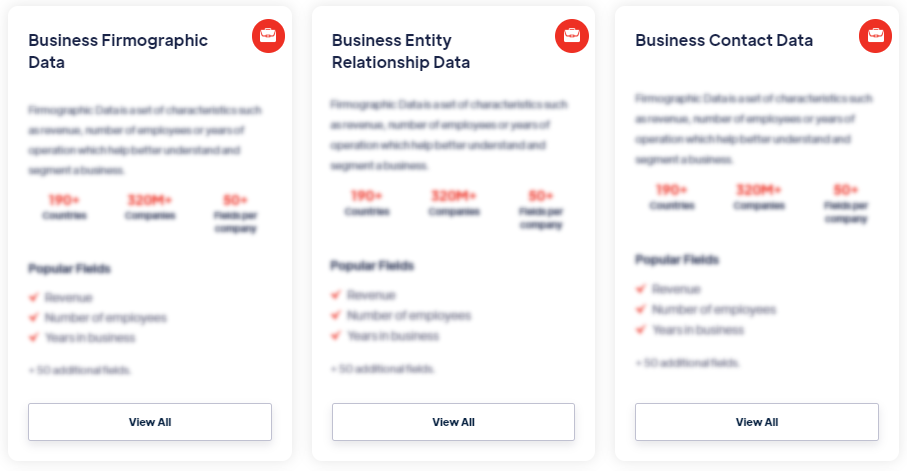Best
Database
Products
A database is a structured collection of data that is organized, managed, and stored in a way that enables efficient retrieval, modification, and manipulation of the data. It provides a centralized and structured approach to store and manage large volumes of information. Read more
Our Data Integrations


Request Data Sample for
Database

Browse the Data Marketplace

Frequently Asked Questions
1. What is a Database?
A database is a
structured collection of data that is organized, managed, and
stored in a way that enables efficient retrieval, modification,
and manipulation of the data. It provides a centralized and
structured approach to store and manage large volumes of
information.
2. What are the common types of databases?
Common types of databases include relational databases, NoSQL
databases, data warehouses, and graph databases. Relational
databases store data in tables with predefined relationships,
while NoSQL databases provide a flexible schema design. Data
warehouses are optimized for analytical processing, and graph
databases focus on storing and analyzing relationships between
entities.
3. What are the benefits of using a database?
Using a database offers several benefits, such as data
organization, efficient data retrieval, data integrity, data
security, data scalability, data concurrency, and data backup
and recovery.
4. What are the key components of a database system?
Key components of a database system include data structure,
data model, database management system (DBMS), query language,
database schema, database administrator (DBA), and database
users.
5. What are the challenges in managing databases?
Managing databases can pose challenges such as data security,
data quality, performance optimization, scalability, data
integration, data backup and recovery, and database maintenance.
6. What are the commonly used database management systems?
Commonly used database management systems include MySQL,
Oracle, Microsoft SQL Server, PostgreSQL, MongoDB, Cassandra,
Redis, and Elasticsearch.
7. What are the future trends in database technology?
Future trends in database technology include cloud-based
databases, big data management, NoSQL databases, graph
databases, in-memory databases, database automation and DevOps,
and blockchain databases.
